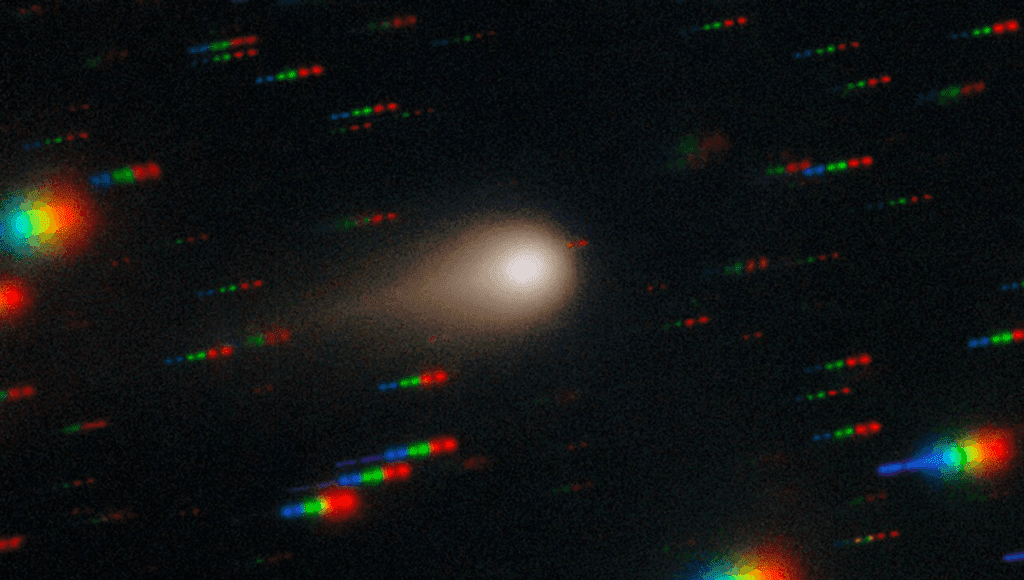Astronomers using the W. M. Keck Observatory have analyzed interstellar comet 3I/ATLAS, confirming the presence of a rare “anti-solar tail.” Discovered on July 1, 2025, 3I/ATLAS is notable for being the fastest known interstellar object, with an eccentricity of 6.1-6.2, indicating it will exit the solar system. Despite some speculation about its origin, it’s primarily considered a natural object that has traveled through interstellar space for about 10 billion years.
A recent study employed the Keck Cosmic Web Imager to examine the comet’s spectrum, revealing elements in its coma. Researchers noted unusual elemental ratios, particularly a high abundance of nickel compared to iron, which challenges existing models since temperatures are too low at the observed distances to evaporate these metals. The study found that nickel is centrally concentrated, while cyanide is more spread out.
Furthermore, the discovery of an “antitail”—where the tail points toward the Sun—has sparked debate. Although rare, this phenomenon may occur when large particles ejected from a comet are not pushed away by solar wind. Continued observations, especially with the upcoming Vera C. Rubin Telescope, are anticipated to enhance understanding of interstellar comets like 3I/ATLAS. This research will be available on arXiv pending peer review.
Source link


